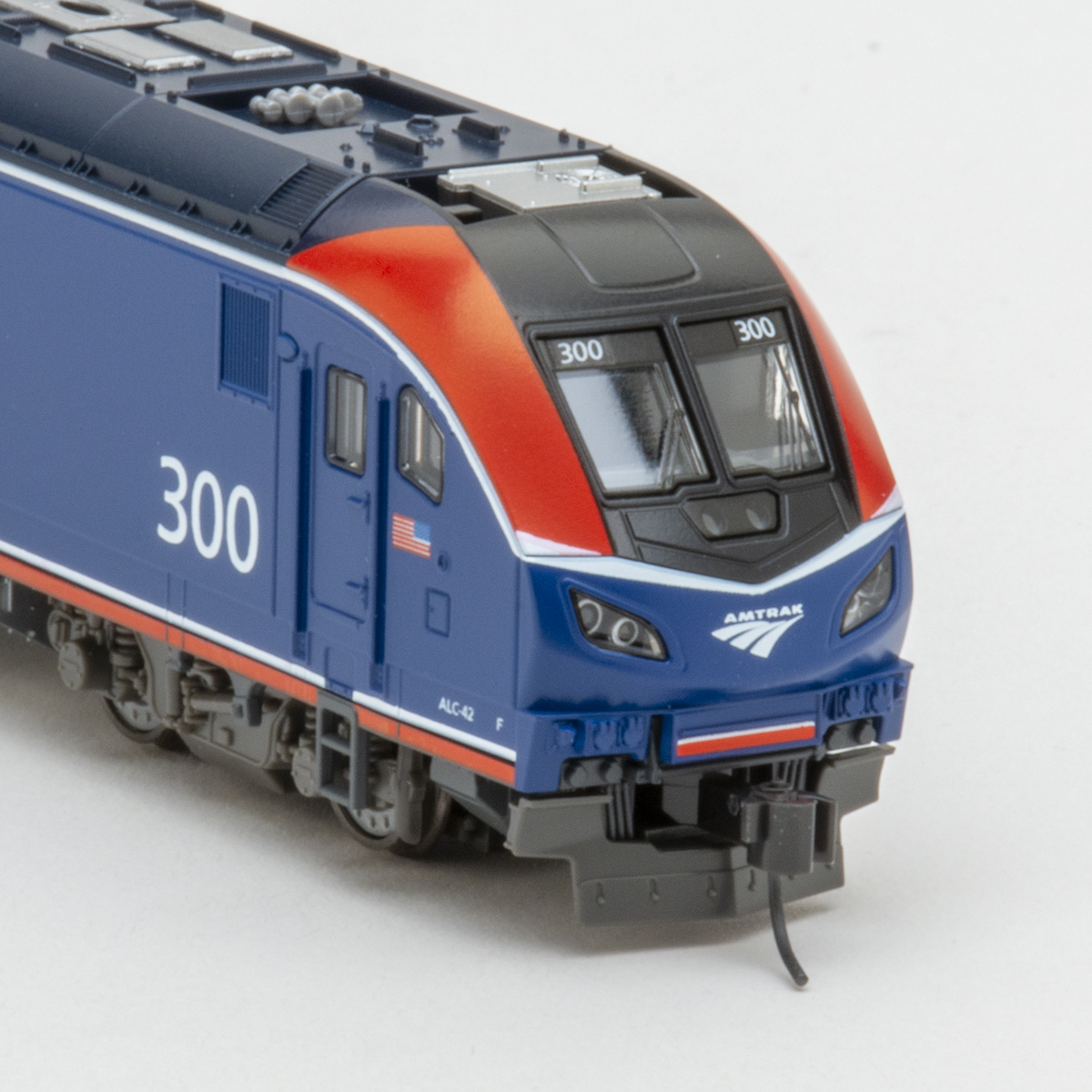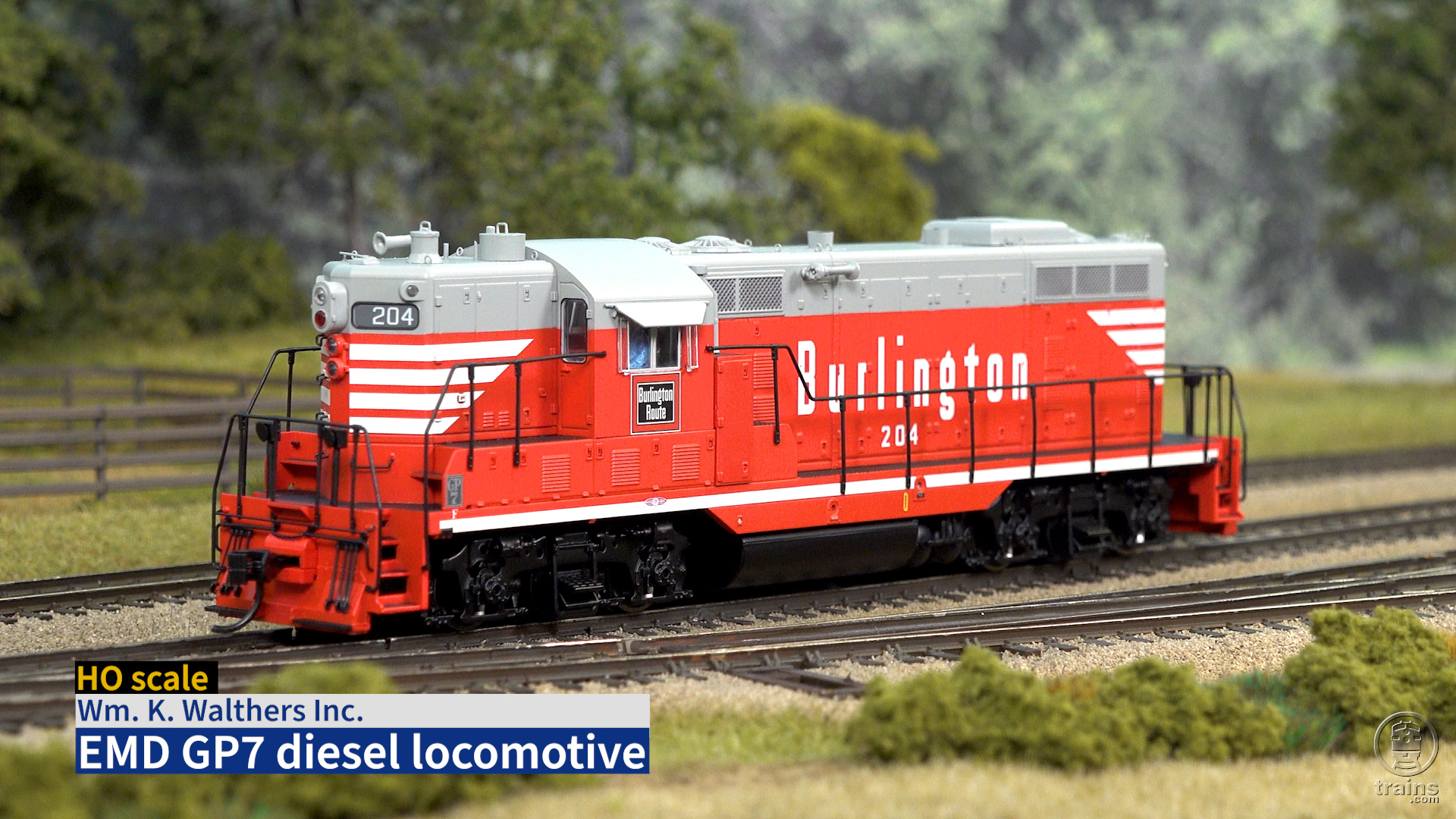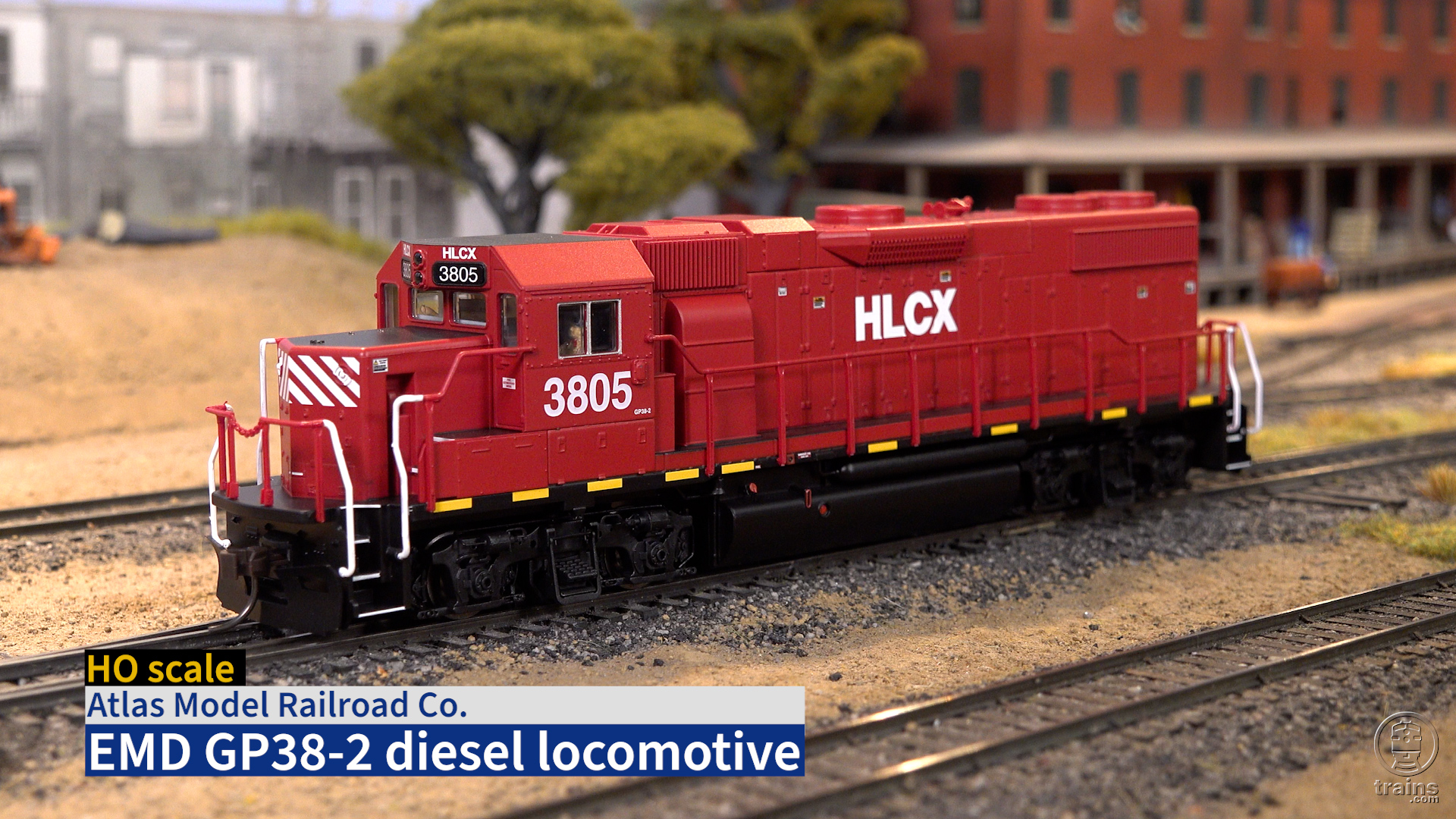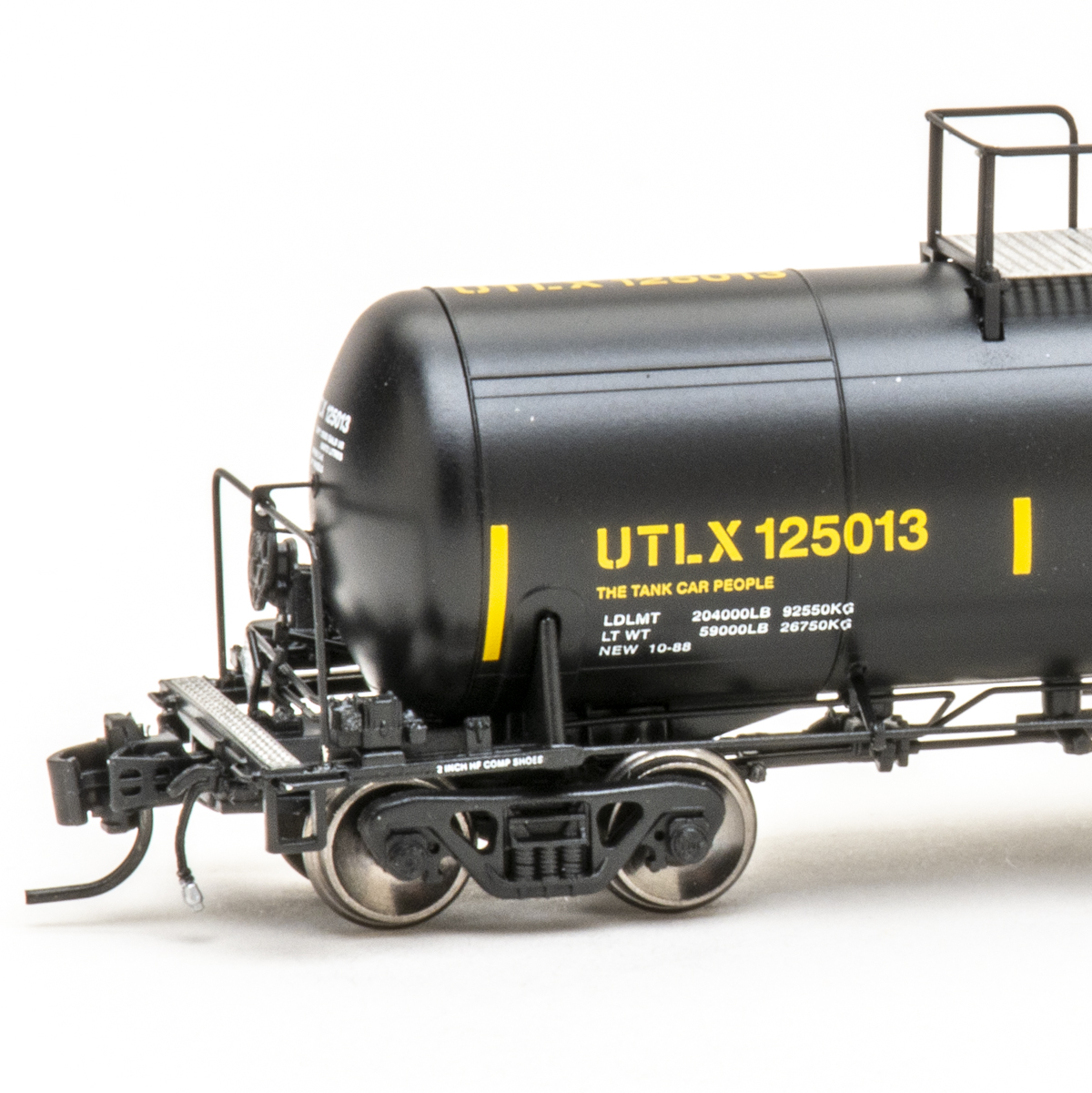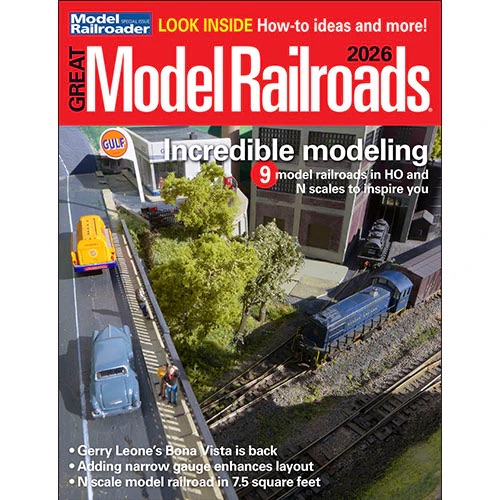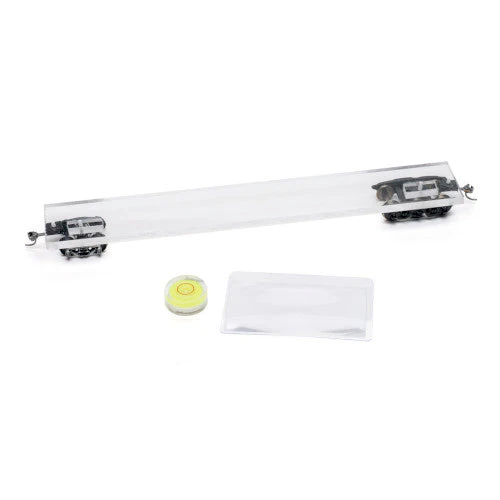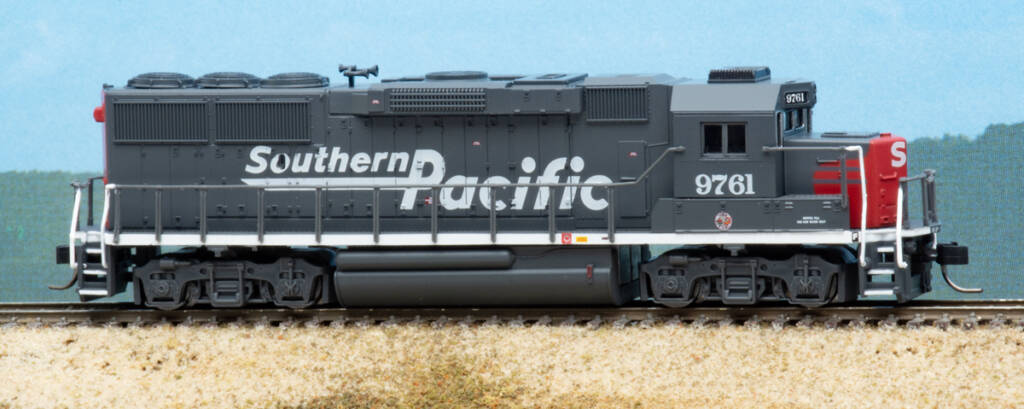
An Electro-Motive Division GP60 has joined the Atlas Model Railroad Co. Master Line. The manufacturer acquired the model, originally produced by Life-Like in 2004, when it purchased all N scale locomotive and freight car tooling from Wm. K. Walthers Inc. in June 2018. Features on the four-axle road unit include an injection-molded plastic shell, Scale Speed motor, and body-mounted Accumate couplers.
Prototype history
Electro-Motive Division produced the GP60 from October 1985 until February 1994. During that time, 294 units were built. The 3,800 hp road unit was equipped with a 16 cylinder, 710G3 diesel engine; AR17 alternator; and D87B traction motors.
Our review sample is decorated as Southern Pacific 9761, part of the railroad’s 9715 through 9769 series built between April and July 1991. The full-size unit was built in June 1991 under order number 907137.
Following the 1996 merger between SP and Union Pacific, the GP60 was scheduled to be renumbered 5860, but the road number wasn’t applied. In December 2009 the GP60 was renumbered UP 2021. In October 2019 it became the railroad’s 1172. The locomotive is still in service today.
Model features
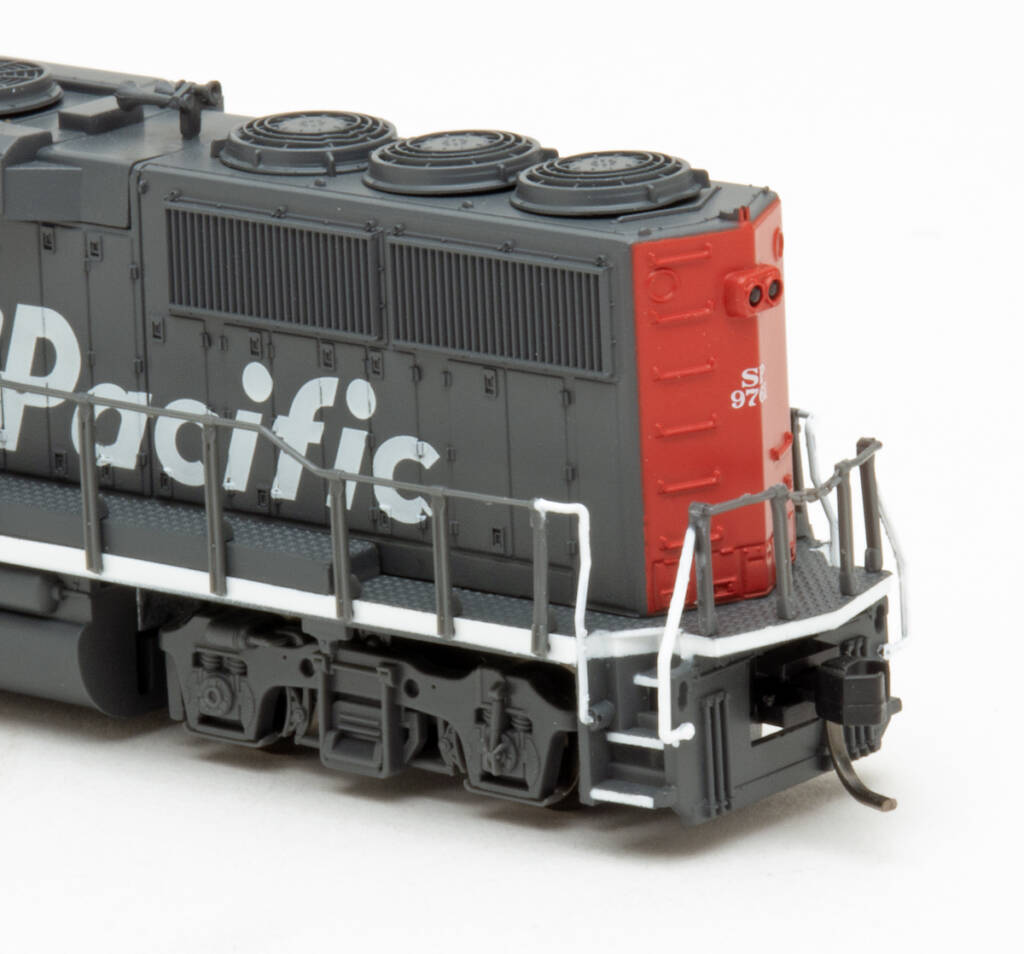
The Atlas GP60 features a multi-piece injection-molded plastic shell consisting of the sill, long and short hood, dynamic brake blister, and cab. The handrails and stanchions are plastic. Molded details on the front and rear pilots include train line and m.u. hoses and uncoupling levers.
Freestanding parts on the long hood of the Espee model including radiator and dynamic brake fans and a three-chime air horn. A factory-applied Prime air conditioner is on top of the cab.
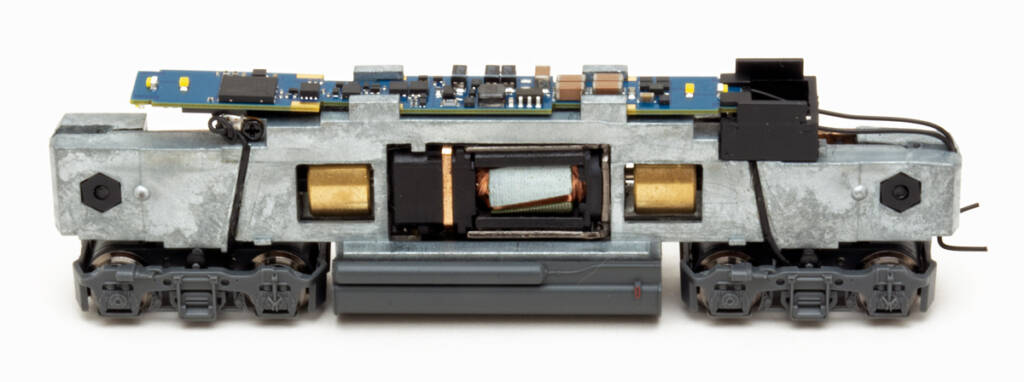
A one-piece truck frame clips to the gear case. Molded details include the brake cylinder, snubber, and spring hanger. The fuel tank is a one-piece plastic casting with a molded air tank and sight gauged (painted red) on each side. Details like the filler neck, air filter, and bell were omitted.
Like other Atlas models, the plastic shell is a friction fit on the chassis. The locomotive features a split-frame mechanism. Wires attached to wipers concealed behind the truck sideframes are soldered to screw-mounted tabs on the chassis. The current is then transferred from tabs on the chassis to pads on the ESU LokSound decoder board.
The speaker in both direct current and Digital Command Control versions are located in the fuel tank. Light tubes run from the printed-circuit board to the ditch lights on the front pilot.
A closer look

Our review sample is neatly painted in Southern Pacific’s scarlet and gray scheme. The separation lines between colors are sharp, and the white lettering and stripes are opaque.
The lettering placement matches prototype photos that I found online, including the Power by the Hour logo below the cab. A few warning labels were omitted, but could be added with decals.
Though the long hood doors are correctly arranged, the placement of the latches varied compared to the full-size 9761 in a few instances. The ditch lights on the front of the model are below the anticlimber, but should be mounted on top. The snow plow and antenna plane are not on the model.
The dynamic brake blister features latches on the engineer’s side. The prototype 9761 was a later production model that had a bolted access door.
Prototype drawings of the GP60 were published in the March 1993 issue of Railroad Model Craftsman. The model’s dimensions closely follow printed data.
I tested the model at the workbench using an NCE Power Cab. At step 2, the GP60 crawled along at 2 scale mph. The road locomotive achieved a top speed of 80 smph at step 28.
Then I took the locomotive over to the Milwaukee, Racine & Troy State Line Route, which uses a Digitrax DCS-210+ DCC system, to see how it performed in an operating layout environment. The GP60 had no issues navigating the 18” minimum radius curves and No. 6 turnouts.
It’s good to see the EMD GP60 back on the N scale market. The paint schemes Atlas has selected for the first run nicely represent the history of the locomotive from 1990 to the present day.
Facts & features
Price: Direct-current model with factory-installed speaker, $144.95; with ESU LokSound V5 sound decoder, $254.95. Subtract $10 for undecorated models.
Manufacturer
Atlas Model Railroad Co.
378 Florence Ave.
Hillside, NJ 07205
shop.atlasrr.com
Era: October 1985 to present (varies depending on paint scheme)
Road names: Southern Pacific, BNSF Ry., Denver & Rio Grande Western, Green Mountain RR, Norfolk Southern, Texas Mexican Ry., Union Pacific, and Vermont Ry. One to three road numbers per paint scheme; also available undecorated.
Features
- Body-mounted Accumate couplers, .010” high on both ends
- Metal wheel stubs on plastic drive axle gears, correctly gauged
- Weight: 2.9 ounces






